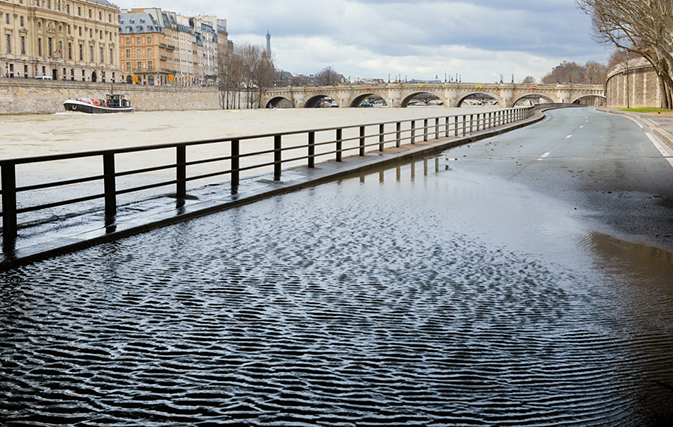PARIS — The swollen Seine River kept rising Friday, spilling into Paris streets and forcing one landmark after another to shut on Friday. Across the city, parks and cemeteries were being closed as the city braced for flooding that could take weeks to fully clear.
The Seine, which officials said was at its highest level in nearly 35 years, was expected to peak sometime later in the day. Authorities shut the Louvre museum, the national library, the Orsay museum, and the Grand Palais, Paris’ striking glass-and-steel topped exhibition centre.
“We evaluate the situation for all the (cultural) buildings nearly hour-by-hour,” said Culture Minister Audrey Azouley, speaking to journalists outside the world-famous Louvre. “We don’t know yet the evolution of the level of the Seine River in Paris.’”
Nearly a week of heavy rain has led to serious flooding across a swathe of Europe, leaving 15 people dead and others missing.
Paris is facing its worst flood in more than 100 years pic.twitter.com/iSI2f8EsBt
— Joel Franco (@OfficialJoelF) June 3, 2016
The Seine has flooded but it's ok, the Baguettes are safe. Don't panic! #parisflood pic.twitter.com/4qfKe55Mg5
— Eloise Gray (@eloise_f_gray) June 3, 2016
Some enthusiastic athletes brave the Paris flood waters. #parisflood #CrueSeine #Paris #floods @France24_en pic.twitter.com/lwoMdlAxyA
— Julie Dungelhoeff (@JDungelhoeff) June 3, 2016
Although the rain has tapered off in some areas, floodwaters are still climbing. Traffic in the French capital was snarled as flooding choked roads and several Paris railway stations were shut. Basements and apartments in the capital’s well-to-do 16th district began to flood Friday afternoon as the river continued to creep upwards.
At the Louvre, home to Leonardo da Vinci’s ‘Mona Lisa,’ curators were moving some 250,000 artworks from storage areas at risk of flooding and taking them upstairs to safety. The Orsay museum, on the left bank of the Seine, was also closed Friday to prepare for possible flooding. The Grand Palais, which draws 2.5 million visitors a year, was also being closed.
The closures are highly unusual.
The Louvre said the museum had not taken such precautions in its modern history – since its 1993 renovation at the very least. Disappointed tourists were being turned away.
“I am really sorry, but we’re closed today,’” one staffer told visitors. “We have to evacuate masterpieces from the basement.’”
Elsewhere in Europe, authorities were counting the cost of the floods as they waded through muddy streets and waterlogged homes.
German authorities said the body of a 65-year-old man was found overnight in the town of Simbach am Inn, bringing the country’s death toll over recent days to 10. France’s Interior Ministry also reported the death of a 74-year-old man who fell from his horse and drowned in a river in the Seine-et-Marne region east of Paris, the second death in France.
In eastern Romania, two people died and 200 people were evacuated from their homes as floods swept the area, including one man who was ripped from his bicycle by a torrent of water in the eastern village of Ruginesti.
In Belgium, rescue workers found the body of a beekeeper who was swept away by rising waters while trying to protect his hives. The man had been reported missing in the village of Harsin on Thursday.
The foul weather has added to travel disruption in France, which is already dealing with the fallout from weeks of strikes and other industrial actions by workers upset over the government’s proposed labour reforms. French rail company SNCF said the strikes had led to the cancellation of some 40% of the country’s high-speed trains.
In addition, French energy company Enedis says that more than 20,000 customers are without power to the east and south of Paris.
Outside the Louvre, tourists expressed understanding at the museum’s closure.
“It’s good that they are evacuating the paintings. It’s a shame that we couldn’t see them today, but it’s right that they do these things,” said Carlos Santiago, who was visiting from Mexico.
